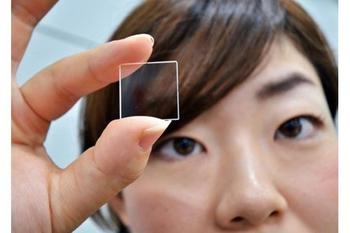If you were to build a time capsule or monument, housing all of humanity's knowledge and culture, would it be possible without the aid of digital storage and its huge capacity?
Take flash memory, data retention is typically around 80 years and a little heat can significantly shorten that; CDs and DVDs utilise fragile organic dye, deteriorating under UV light or high temperatures, magnetic disks (hard drives, tapes) deteriorate as they're exposed to magnetic forces, charged particles and heat.
However you look at it, there's not a product on the market capable of withstanding the test of time and exposure to the elements. We can instead look towards analogue means, however, even paper deteriorates and, an encyclopaedia carved-out on a pin-head can soon be worn away and is difficult to spot; that's before considering the practicality of conversion from digital media, where much of our information currently resides.
Hitachi believes it may have the answer, however, with specially grown slivers of Quartz Glass. The technology works by creating dots, encased within the glass, that can be viewed with standard optics, future-proofing the ability to read data from the device. The density of a four layer sliver is currently just above that of a CD, though more layers and densities should be achievable.
What's important to realise, is that this technology can tolerate high-temperatures, in fact, Hitachi confirmed, through an experiment, that the glass and its data remained in-tact even after exposure to 2,000 degrees Celsius for two hours. The real benefit of Quartz Glass, however, is in its longevity, which the firm claims should be a few hundred million years. The glass is also inherently waterproof.
Looking to more practical short-term usage, Hitachi's Quartz Glass offers some serious protection against fire and radiation, for data that simply can not be lost.







